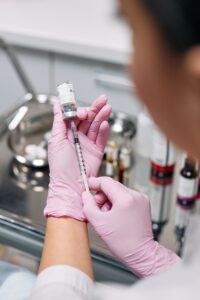Medical Diagnostic Imaging
Various imaging options are available to our patients to support focused management plans and reduce waiting times.
Clinical Investigations & Diagnostic Ultrasound Imaging
Musculoskeletal Diagnostic Ultrasound is a real-time imaging method that uses high-frequency sound waves to create images of muscles, tendons, ligaments and joints throughout the body.
MSK Ultrasound can help to diagnose a range of injuries and chronic conditions, including:
- Tendinopathy
- Plantar Fasciopathy
- Muscle strains/tears
- Bursitis
- Joint problems such at Osteo-arthritis
- Masses such as tumors and cysts
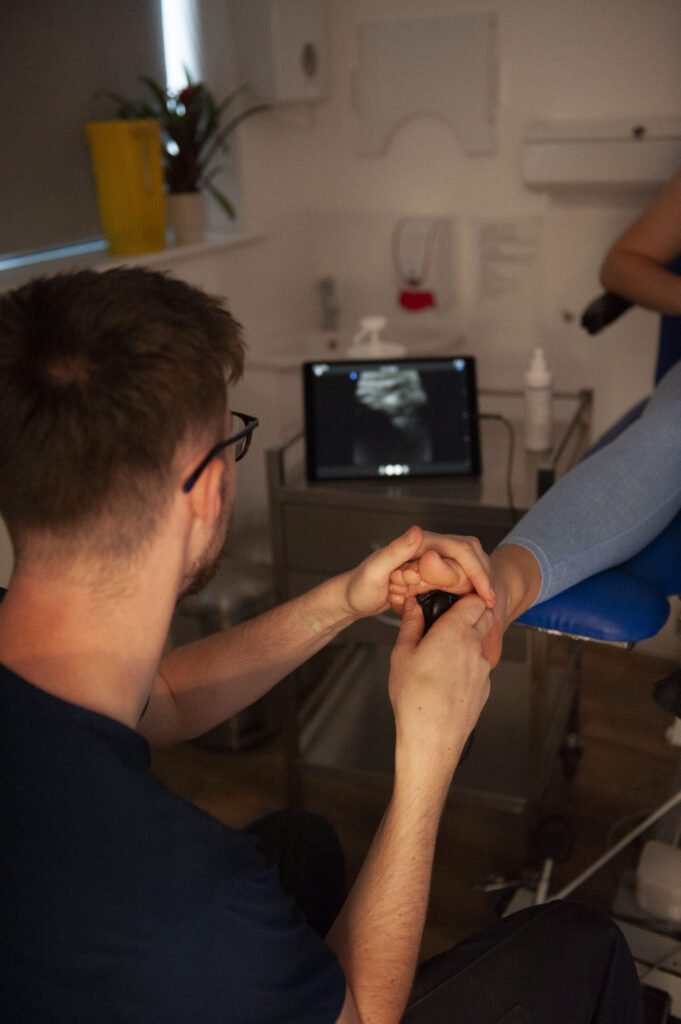
At The Foot and Gait Clinic, using this powerful tool, we can make the clinical diagnosis more precise helping our patients to understand their diagnosis and recommended treatment plans. All of which is essential for improved patient care.
Ultrasound machines use a transducer (small hand-held device) to send high-frequency sound waves to the affected area. Echoing sounds are transmitted back to the transducer which then sends them to a computer for processing. Based on the information, an image of the target area is visualised in real time. This is extremely helpful when pain or injury is triggered by movement, which cannot be captured in a static image.
Ultrasound-guided injections use dynamic musculoskeletal ultrasound imaging to follow the movement of the needle inside your body and guide it to the correct location. This improves the accuracy of the procedure and makes it safer to treat pain, inflammation and impaired mobility.
Ultrasound technology has the added advantages of being non-invasive, painless, quick, without radiation and can be used in the presence of metal implants which can be problematic in MRI imaging.
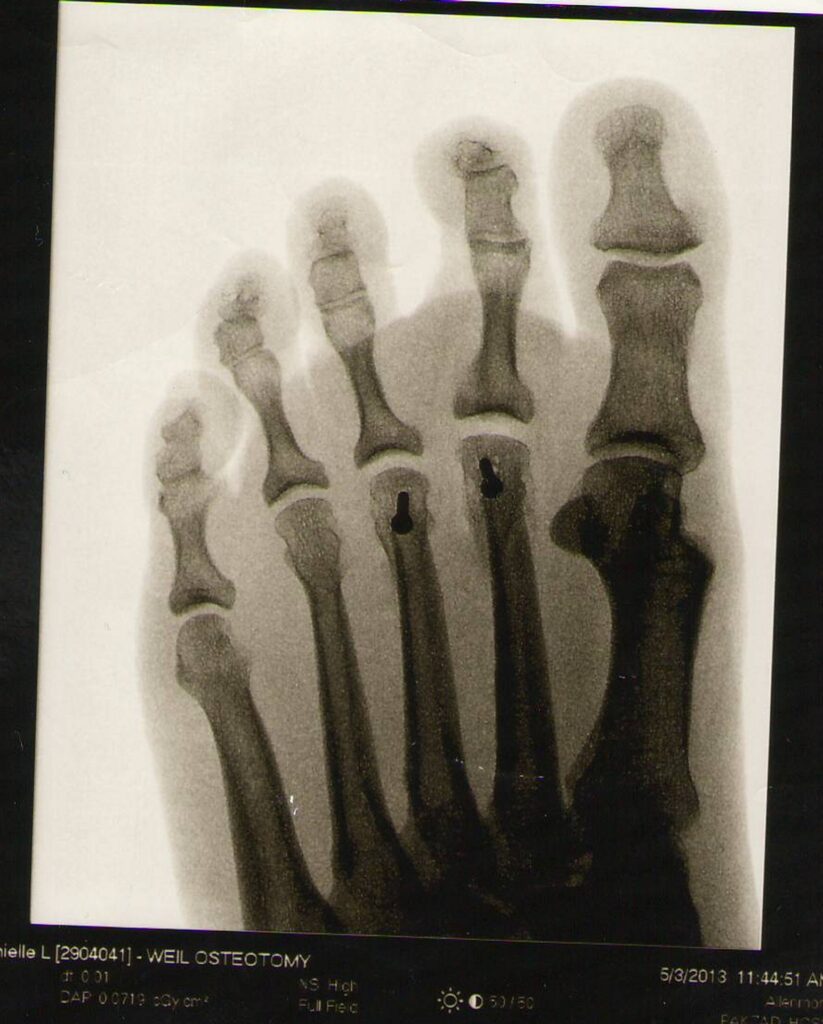
MRI & X-Ray Imaging
Using our clinical referral system we are able to provide our patients with direct access to diagnostic MRI, ultrasound and CT scans at over 150 imaging centres cross the UK.
Advantages of imaging:
- Putting a patient’s mind at ease
- Ruling out certain conditions, such as breaks
- Confirming clinical findings that may require review or intervention by a specialist (e.g. surgery)
- Assessing the severity of certain conditions and injuries
- Understanding the causes of your patient’s symptoms
Injection Therapies
Injection therapies are used in podiatry for a variety of joint and soft tissue conditions. When clinically appropriate they can be used as part of a wider treatment plan to help relieve pain and inflammation. Injections can be performed under local anaesthetic and ultrasound guidance.
Hyaluronic acid
OSTENIL is a synthetic hyaluronic acid that is injected into the joint space to decrease the pain and stiffness within the affected joint. This is done by trying to restore the balance that has been upset between the breakdown and production of hyaluronic acid in synovial fluid.
Whilst this can decrease pain and help with movement, it does not reverse the damage to the cartilage. Relief is temporary although can last for several months after a course of injections, which can be repeated.
There is a very low risk of reaction as it does not contain animal proteins and post injection soreness is also rare. The more severe the arthritis the less chance of it being effective. These injections carry less risk than steroid injections.
Depending on the joint affected, it usually requires a course of injections on a weekly basis for 3 weeks, the effects can take a few days to be noticed or after a second injection.
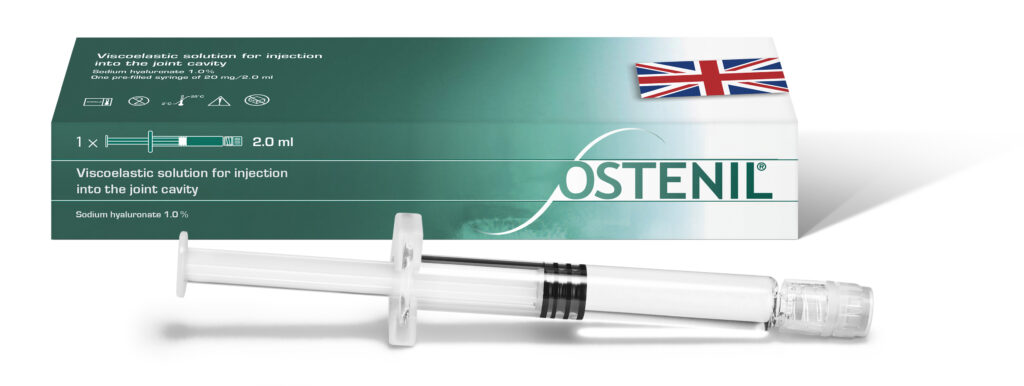
Corticosteroid Injections
The injections are either a steroid on it’s own or with a local anaesthetic, sometimes a local anaesthetic is given separately as part of the treatment.
The steroid injection itself is not a pain medication but rather an anti-inflammatory that works by preventing collagen production. The injection shuts down collagen-producing cells in the tendon or joint; this action suppresses inflammation, which is the redness and swelling caused by your body’s healing response to damage or injury, and calms nerves, which indirectly reduces pain.
The effect of the steroid is usually seen within a few days, although it can take a few weeks before the full effect is seen. If an anaesthetic is used, any numbness lasts only a few hours and care must be taken.
This varies depending on the condition. The effects may last between a few weeks to several months, it may even resolve the problem.
- Side effects are rare but important to be aware of. Post injection flare-up of pain. This may last up to 48 hours. Painkillers such as paracetamol can be taken if needed.
- Infection is rare but if you develop any of the following symptoms: swelling, redness, warmth around the injection site or are generally unwell then seek medical attention.
- Anaphylactic shock is an extreme but very rare allergic reaction, it usually happens quickly, very shortly after the injection has been given, symptoms such as difficulty in swallowing or breathing, tightness in the chest, are possible signs of reaction.
- Facial flushing can be present for 24 hours following injection and premenopausal females may experience breakthrough menstrual bleeding.
- Fainting. A few people feel faint after their injection, this usually settles by lying down for a few minutes, please advise before an injection if you have a tendency to faint.
- Reduced immunity may occur, as it is absorbed into the body it can reduce your immune system making you more susceptible to catching colds or flu and recovery could take longer
- Central serous chorioretinopathy is a rare side effect causing blurred vision, should this happen contact GP or an ophthalmologist.
- If you are breastfeeding it may cause milk production to stop for a short period of time.
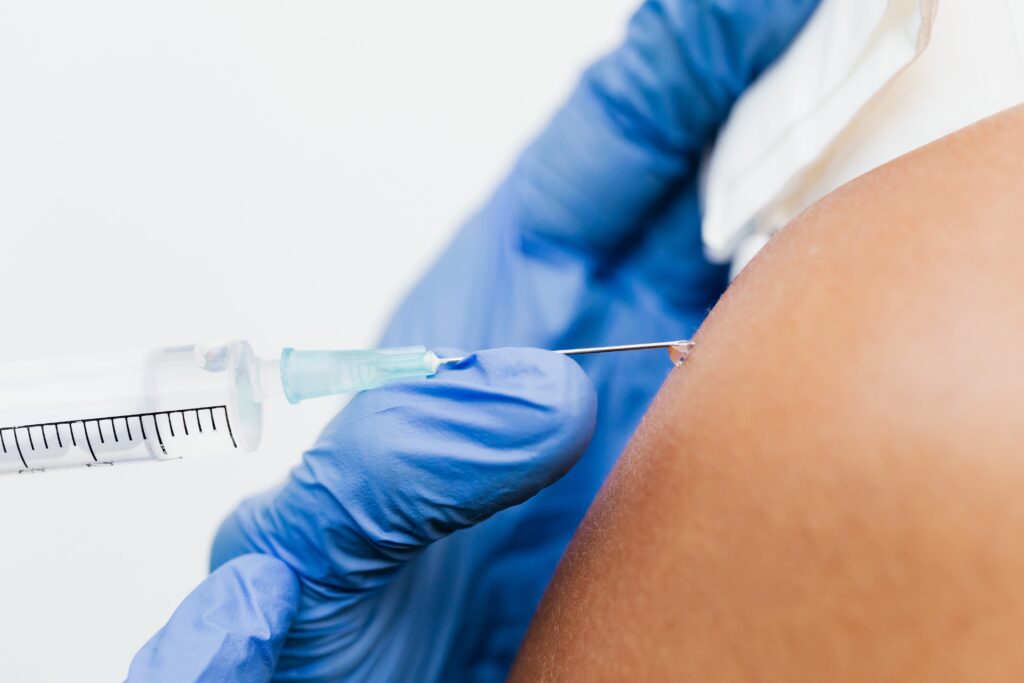
Dermal Fillers
Curacorn® has been developed using a highly viscous formulation of Hyaluronic Acid (HA). HA is a naturally occurring substance, most often found in the joints, therefore it is biocompatible with very few side effects.
The filler is injected underneath a corn or callus which causes a response in the body that provokes the formation of collagen and draws fluid towards the area. This creates a comfortable, natural cushion between the bone and the skin.
The ‘cushion’ underneath a lesion decreases the production of callus and corns, ultimately relieving the pain associated with them. The high viscosity has proved not to disperse under the pressure of walking or the forces exerted on feet from footwear.
